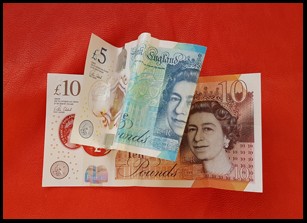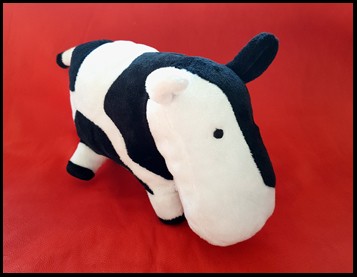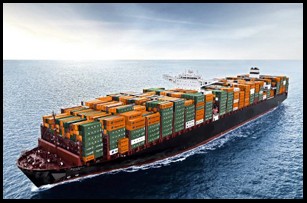The future of leather
I attended the Eurofins BLC Leather and Sustainability in Retail conference in November 2018. Click here to read the 8 essential facts I learnt that day.
Since the conference, I have been fascinated to speak to several highly informed leather industry professionals. I decided to interview UK-based marketing professional and leather expert Mike Redwood. I asked him some questions I’d always wanted to know about leather, and also asked for his take on what the future of leather looks like.
The more we know as footwear industry professionals, the better informed our decisions can be.
1. Mike, what is the biggest challenge facing the leather industry at present?
I take a world view here as leather is a global industry, in which the UK is a small player both as a raw material supplier and tanning country. The biggest long term issue is to ensure that leather remains relevant as a material for new generations into the future.
In the past we assumed that since the supply of leather, dependent as it is on our consumption of meat and dairy products, was growing slower than the demand likely from a fast growing human population leather would become scarcer and more valuable. It is only now recognised that leather has competitive materials in every sector.
Two vital points have been coming clearer over the last ten years. First the alternate materials space is being filled with more and more high quality and interesting materials, attractive to different segments of the market. Second the very rapid increase in urbanisation around the world means that huge numbers of younger consumers do not have the rural backgrounds of their parents and grandparents, They have not been brought up with leather as the natural choice for bags, footwear and clothing etc.
2. Reports relating to the increasing popularity of veganism as a lifestyle choice have been prominent in the media this year. Has there been a decline in leather consumption in the UK which correlates with what the media are portraying as a big consumer trend?
I do not think that the move to vegan lifestyles has yet impacted on leather in a bag way, but on the other hand we should not be complacent. The media like a story and the fanatical side of veganism is both well funded and very aggressive. Having people like Stella McCartney as champions give them a voice around the world and they are exploiting that as much as they can. Over the last twenty to thirty years attacks on leather have grown from the animal rights side of PETA and been noticeable as a result of its building a narrative combining cherry picked truths, misleading statements and lies.
The corollary of this is that as sustainability has come to the fore, unless you are 100% against animals being used leather is by any measure one of the most sustainable materials that can be used. This is as long as it is made properly. With the discovery that not only do plastics make for messy waste, but that they disintegrate into micro formats that are getting into the fish and animal food chains leather has a promotional opportunity. The non plastic leather alternates other than textiles for certain uses are so far not very good.

Until a few years ago the UK leather position, as with the rest of the world, was not to confront attacks like these but this has changed now and I am glad to say that most industry associations around the world are starting to communicate positively with the marketplace. This is important to stop any possibility of a decline in leather consumption for the reasons you mention in the future. We have not seen it yet, but need to be aware of the danger.
3. Do you know if the UK meat consumption statistics correspond with the trend in leather consumption?
Generally speaking the industry looks at meat consumption trends to get a feel for future hide supplies. Leather production at the moment – and all through history – depends more on supply than on consumer demand for leather. The rough trends are clear that per capita meat consumption is falling a bit in the west but in the rest of the world the rapid growth in the middle classes is leading to big increases in demand. Since in the EU and the USA we produce high quality, trusted meat, the industry remains strong.
4. What impact (positive or negative) do you think Brexit will have on the UK leather industry?
Given that the EU has many countries like Italy and Spain with strong leather industries and France and Germany where they are very effective in certain sectors UK tanners tended to export to other parts of the world. So the narrow view would be that Brexit will weaken Sterling and the tanners will have easier exports. The machines and chemicals are nearly all bought from the EU but are a small cost compared to hides. I am only aware of one or two smaller UK tanners who buy hides in Europe.

We have one large group working in the automobile industry and while I have no idea what they are thinking, personally I expect Brexit to create difficulties since any raising of barriers interferes with integrated supply chains and just in time deliveries. I cannot imagine the UK will keep its large car industry as strong and growing as it has been in the past few years. So some adaptation may be required.
5. What are the biggest misconceptions about leather and the leather industry that you’ve come across in your work with and outside of Leather Naturally?
The big news from 2018 was the number of consumers who have ended up thinking we kill cows for leather, whereas making leather is quite a useful way to help the meat and dairy industry get rid of unwanted hides.
Hence alongside the vitally important global promotional campaign that Leather Naturally wants to run an education programme and integrate it into what national associations can do. Whereas we have been used to consumers who understand the origins, the value in use, the beauty, durability and performance of leather new, younger consumers here and around the world need to be properly educated. We have some evidence from Germany that young people do not associate leather with cows, and we have had cartoons in daily newspapers about schoolchildren not realising that milk comes from cows.

In some parts of the west in the late 20th century a lot of factories making and using leather closed down, as production moved overseas. These plants were often quite old as it was not worth updating them if the future was uncertain. Consequently we have a few areas where an older generation see the leather industry as a sunset industry, and a dirty one. This is a quite false representation as modern tanneries have transformed over the last thirty years.
At the same time we cannot deny that in some places in the world regulations related to employment, health and safety and the environment are not enforced properly. This is bad for everyone, and a huge black spot on the image of leather world wide; exceptionally disappointing given that all the rest of the industry takes these matters so seriously now. We have to work harder to get these matters resolved. There is no point hiding and saying “we are British” or “we are Italian” and it does not happen here. Leather is a global business and problems on the other side of the planet affect us all.
6. I know we produce cow and goat leather in the UK. Do we produce pigskin, sheepskin, or any other animal leathers here?
The UK mostly export its raw material untreated, as we only have three large tanning groups left. Our other tanneries are quite small. Our raw material is primarily cattle and sheep. The sheep skins are not suitable for gloving leather so our main sheep tannery uses specialist imported sheep. In fact all our main tanneries mix domestic raw material with imports. They are world leading specialist units and require raw material precisely suited to their production. This is a format we see increasingly around the world.

We have lost our sheepskin clothing business, which used to be quite big but still have a little chamois production from sheep and a world famous parchment tannery. We have some high quality traditional cattle hide tanners using vegetable tanning who use a mix of UK hides and imported hides.
In recent years we have started to see herds of goats being introduced into the UK for milk and meat, and we have one tiny boutique tannery established using some of the skins. I do not know what happens to the majority of the skins at this time. Equally I do not know what happens to the small but growing number of UK buffalo hides. For pigskins my guess is that the skins are scalded at slaughter to remove the hairs and then left on the meat.
7. What developments can we expect from the UK leather industry in the next decade?
I think that the industry world wide has been maturing well over the last fifteen years and become much more market oriented, innovative and proud of what it is doing. So I expect the UK tanners, certainly the three bigger ones plus perhaps one or two of the smaller units, to grow their business. I do not sense that any want to stand still. With proper communication and consumer education leather is a relevant material, and I think our top tanners know how to keep it evolving to fit into contemporary society. We live in an increasingly experiential world and leather with its touch, its patina, smell, ability to age well is perfect for that environment. Leather brings comfort and tranquility to modern technology, and as an organic material it humanises cities characterised by metal and glass, sharp edges and a cacophony of sound. That is why it is proving popular with interior designers and in public transport.
One major element is definitely going to be encouraging young people to become interested in a career in the tanning business. Once in most people seem to get excited and want to learn more, but in an ageing society where manufacturing has been largely replaced by service industries we are going to have to fight for good staff at all levels.
Yet I see no reason for pessimism in the leather industry, lots of reasons to be optimistic. I have enjoyed going into tanneries and handling leather all my life, and the new modern leather manufacturing units still offer increasingly compelling visits.
Find out more about the subjects discussed in this interview:
Thank you very much for taking the time to answer my questions with such informative answers Mike. It looks as though the future of leather will be long.
If you’re wondering whether you can use leather in your products and label your brand “sustainable”, I can help. I’ll guide you through your material selection process, so you and your customers are clear on how your products reflect your brand values. Just send me a message when you’re ready to receive support to help you achieve your shoe brand goals.



Leave a Comment: